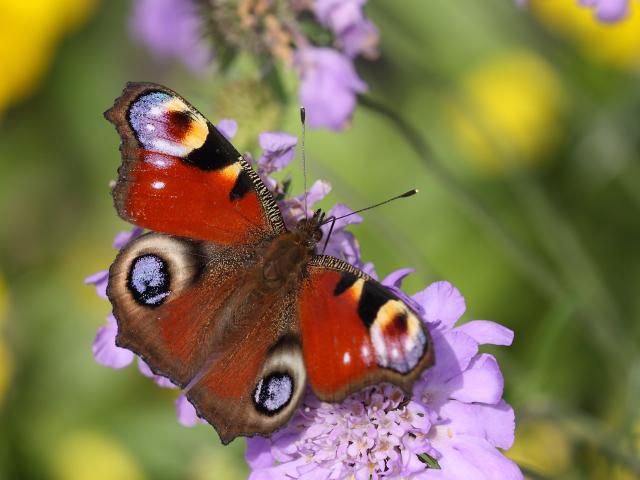

The Peacock
The Peacock's spectacular pattern of eyespots evolved to startle or confuse predators, make it one of the most easily recognized and best-known species. It is from these wing markings that the butterfly gained its common name. Undersides of the wings are very dark and look like dead leaves. A fairly large butterfly and a strong flyer.
Although a familiar visitor to garden buddleias in late summer, the Peacock's strong flight and nomadic instincts lead it to range widely through the countryside, often finding its preferred habitats in the shelter of woodland clearings, rides, and edges.
The species is widespread and has continued to expand its range in northern Scotland.
Size and Family
- Family: Nymphalids
- Size: Medium/Large
- Wing Span Range (male to female): 63-69mm
Caterpillar Foodplants
Common Nettle (Urtica dioica), although eggs and larvae are occasionally reported on Small Nettle (U. urens) and Hop (Humulus lupulus).
Lifecycle

Habitat
Common and found in a range of habitats. It can be found hibernating in dark place over winter.
Distribution
The Peacock has spread into the northern half of Scotland over the past two decades.

